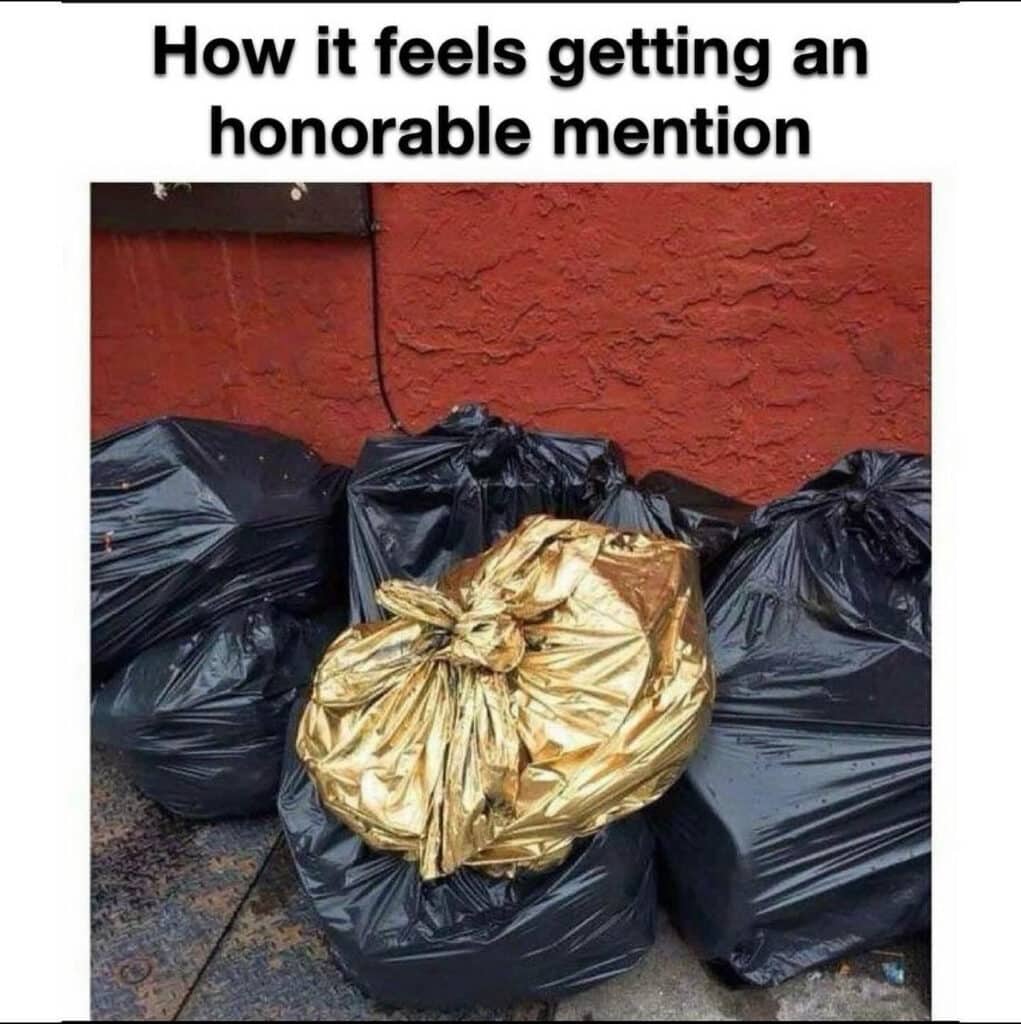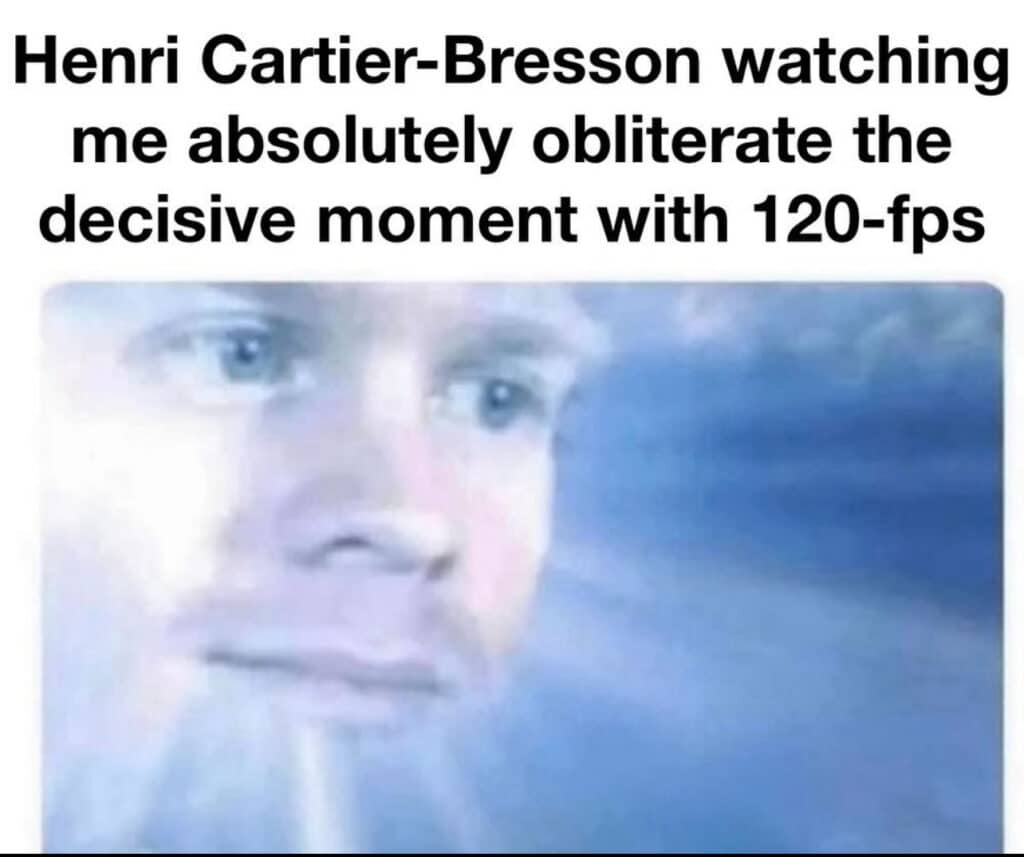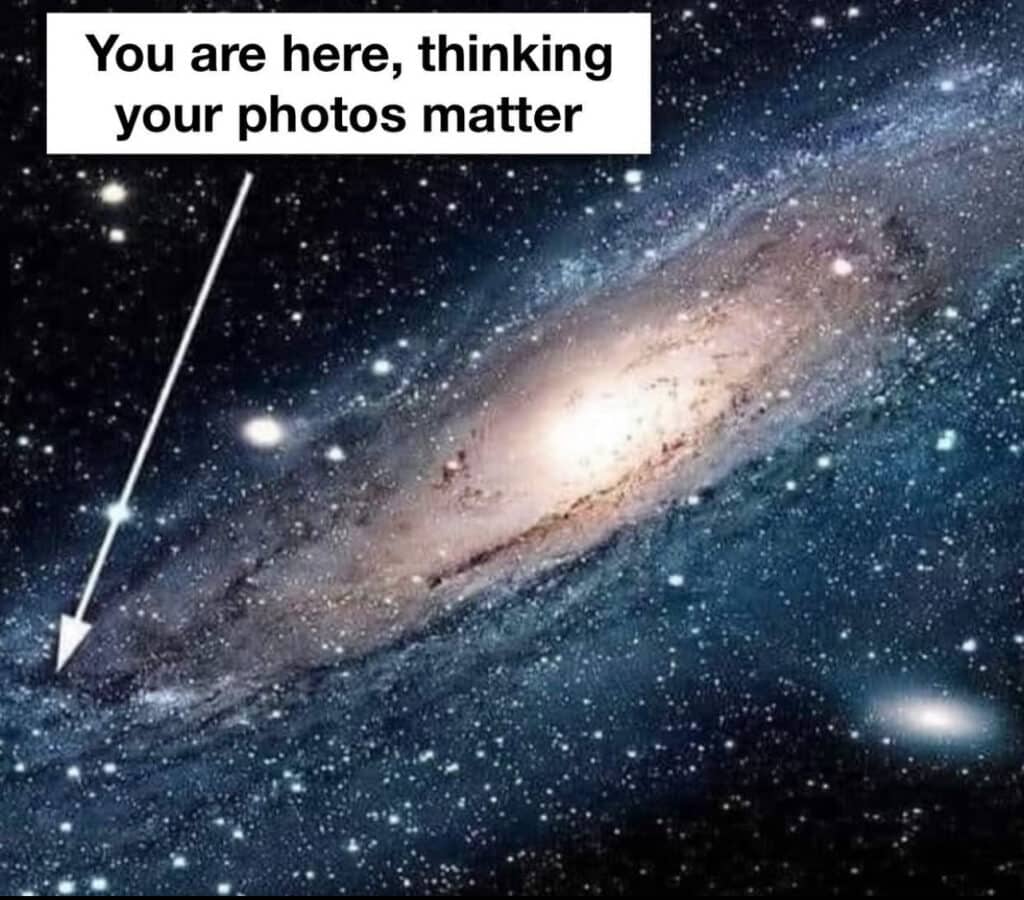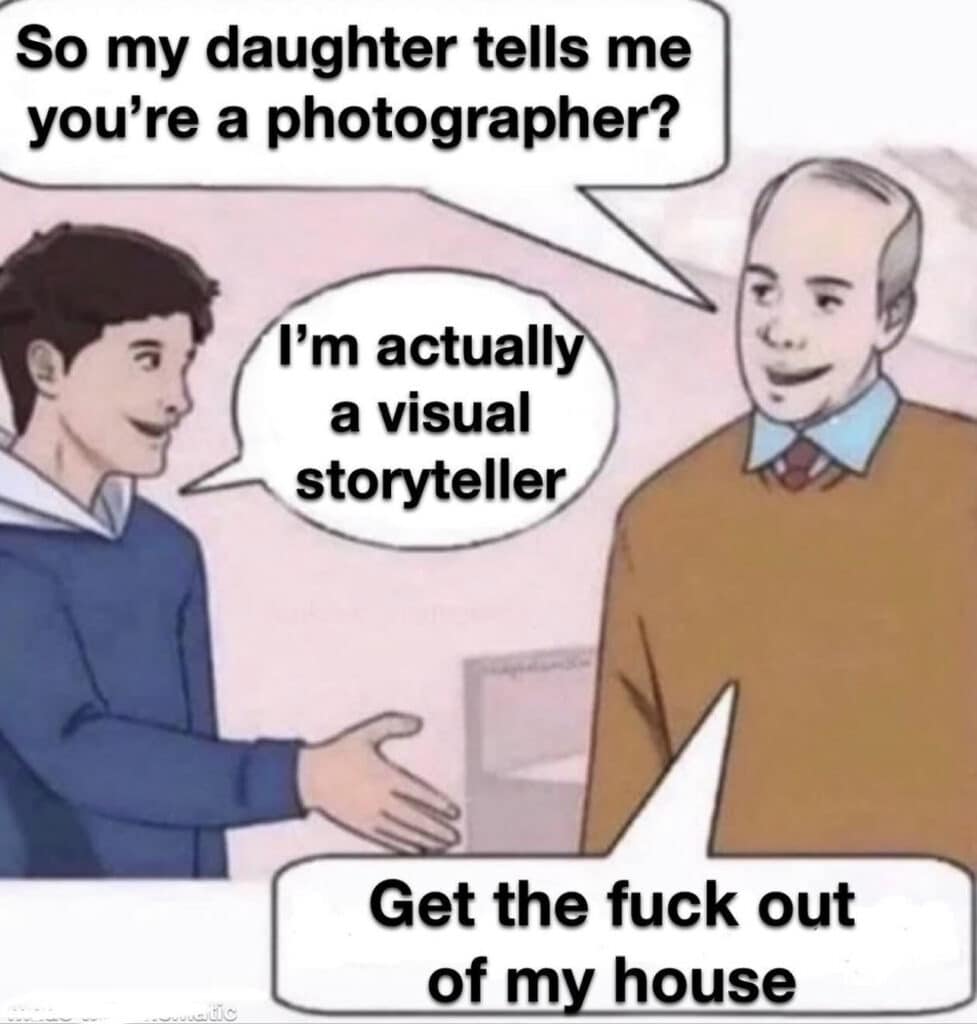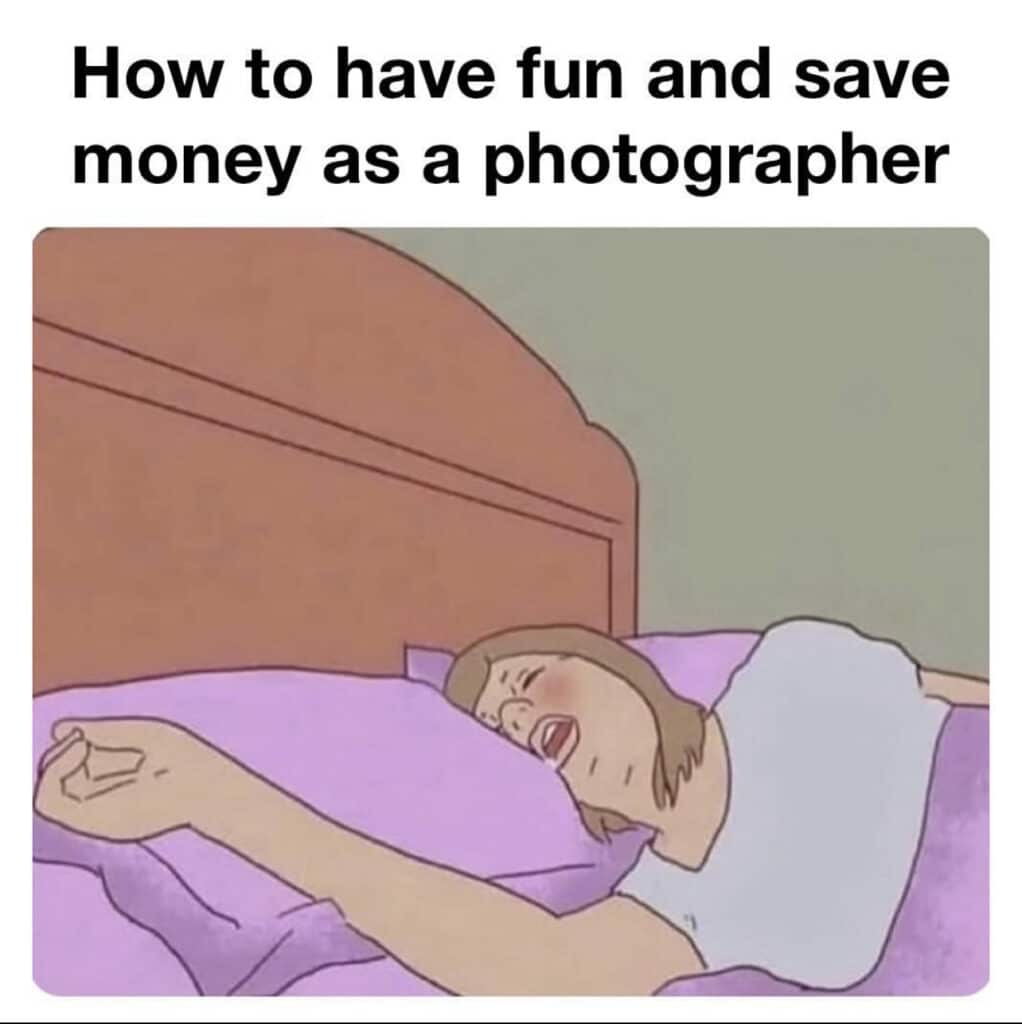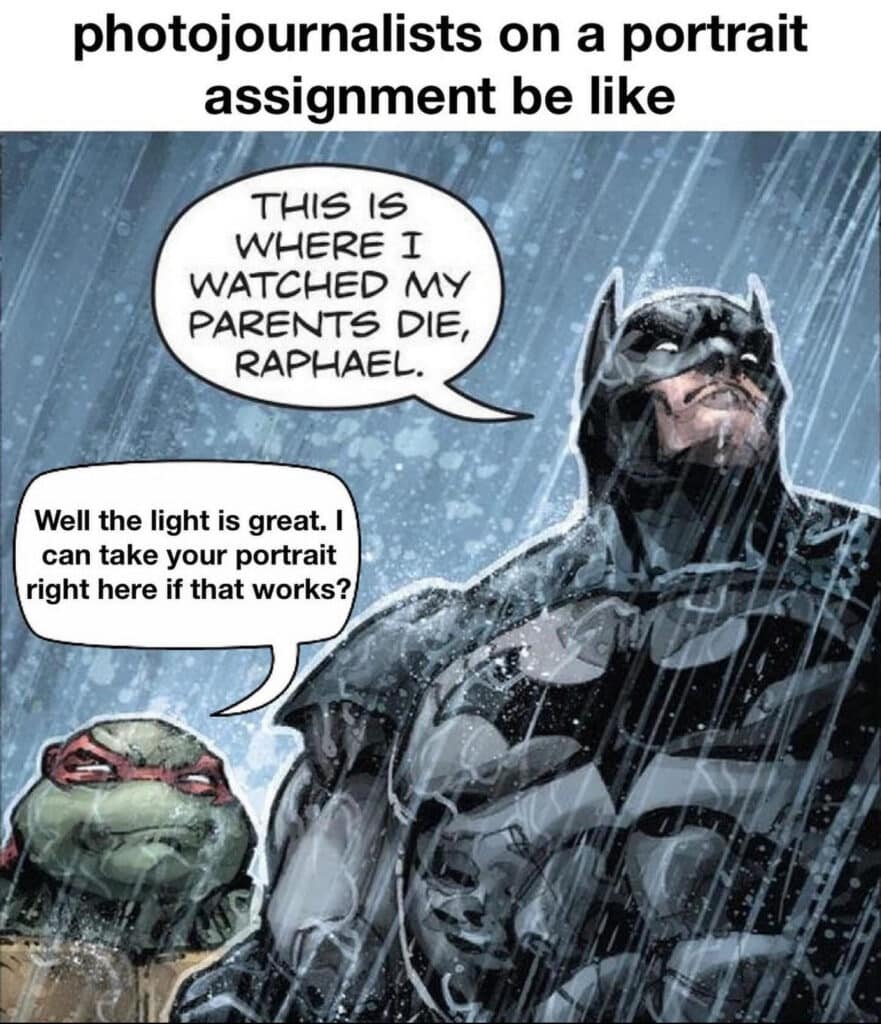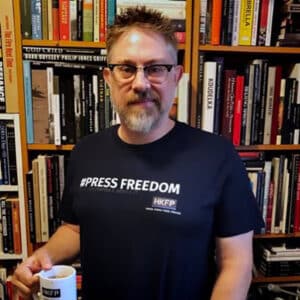For the record, I know who is behind the Meme Press Photo account on Instagram. I also know that people have been trying to unmask who is posting there. But you’re not going to get the name from me. I have agreed not to share their identity for this story. So I will be changing up pronouns, and doing what I can to keep them anonymous.
To sum up the opening from the TV series Dragnet, “The story you are about to read is true. Only the names have been changed to protect the innocent.” Or maybe it’s the guilty in this case, or however you want to classify the creator. Maybe “Pay no attention to the man behind the curtain” from the movie Wizard of Oz works better. In the end, the person behind all of this may not matter to the whole story as much as the driving force behind them.
I don’t remember how I first was introduced to the Meme Press Photo account. I’m not sure if I was told about it, someone passed a link to me, or I just stumbled upon it. But I do remember immediately starting following the account. There was something about it that I really enjoyed. Not only is most of the content pretty funny, but once you start looking, you can’t not look to see what’s going to end up in their crosshairs next.
The more I did, the more I realized that there is something behind it way more than just jokes about the photojournalism industry. There is truth there. And also some of the “sometimes you just need to laugh to deal with it all” mentality as well.
“Meme Press Photo started as an account for just my friends really. I wasn’t, and still am not, trying to make some big statement. I don’t have the authority to do that. The memes do take a stance on things, obviously, but it was, and is, just jokes my friends and I come up with,” the creator told.
I was going to write a bit here about how they got into photojournalism, and the story behind it. However, after reading my first draft, I thought better of it, in the vein of trying not to blow their cover and revealing too many details.
What I can say is that when the Covid pandemic hit, their journalistic career truly began, with documenting the lockdown in New York City. Then there were the protests following the death of George Floyd. Then they covered the January 6th Capitol attack.
Upon graduating journalism school just three days later, they began working full time. Currently they are a full-time staff photographer, while also picking up freelance work as well.
Working as a photojournalist, and being in that world, is what led to the creation of Meme Press Photo. Along with their friends, they were jokes shared among themselves about the world of photojournalism.
“It started with me making memes on my personal account. I literally just picked the biggest institutions that promote elitism and started making jokes about them,” wrote one of the founders. “All the things we would joke and gripe about in the form of memes was just funny to me and my friends. It still is. There wasn’t much thought to it other than that. I am more surprised than anyone that it has grown, and is growing, into what it is now. It is so dumb, but I am just happy my friends can laugh along.”
While the memes are funny, there is also an undercurrent to them that brings up many issues in the photojournalism world, and photography in general. Subjects like lack of decent day rates, elitism, sexual harassment issues, and older photographers who both gate-keep and don’t help younger photographers have all been the subject of various memes.
“I think these topics are all equally damaging, but the thing I think I go after the most is the unwarranted elitism and massive egos”, said one of the founders. “If you’re a photographer whose job it is to cover people on their worst days, people who are underrepresented or oppressed, how can you honestly look at yourself and be an egotistical asshole about making pictures. We know these people, we hate some of them, but the industry rewards them time and time again.”
This virulent criticism of the behavior of certain photographers is obviously not a generality. There are those who break those molds and remain down to earth.
“I am always more impressed by the people who are absolute legends in photography, but super down to earth. That is what matters to me, not what they have covered or how big of a deal they think they are. People who don’t feel the need to flex who they are and rather just be cool. You would think it’s sort of dumb to even have to say this, but any photographer like me reading this knows what I mean… A lot of people reach out and say they appreciate having a place where they can relate and feel seen. That makes me happy. “
Another topic that runs through much of Meme Press Photo is both gear culture, and the inequality created by many photographers who have financial backing from generational wealth and family with those who don’t. “One of the things my friends and I constantly talk about is watching people fly around the world covering major event after major event after major event for no news outlet and wondering how? The playing field between those who have to work odd jobs to supplement their photography careers will never be level with those who come from money.”
While wealth and inequality is a variable in many sectors, this ends up having a great impact on the photography industry, since those who can’t make a living in photojournalism are eventually forced out.
“Having a career in photography is a game of endurance. Capital equals endurance. A lot of great photographers get beat out on assignments, or outlasted in general, by a lot of bad ones simply because of financial advantage.”
Combining this financial stress is also the fact that newsrooms are shrinking, and in many cases, photographers are one of the first to feel the pinch. According to CatchLight, a visual first media organization that leverages the power of visual storytelling, between 1999 and 2015, 53% of visual journalist position were cut. This is more than any other part of the newsroom. The Pew Research Center has reported that between 2008 and 2020 newsroom employment overall in the U.S. has fallen 26%. And the situation has not improved since.
It is not just small outlets and local newspapers that have been laying off journalists of all stripes. The Washington Post, the L.A. Times, Bloomberg, The Wall Street Journal, have all shed jobs this year. The layoffs are also affecting not just legacy outlets, but also digital based new media outlets. Vice News laid off hundreds of employees and stopped publishing on their website as The Messenger, which lasted less than a year, shuttered earlier this year.
“I don’t really know what would help to be honest,” said the founder of Meme Press Photo. “I would love to give a thoughtful response on the state of our industry and how to save it, but I can’t. I think photographers just need to keep grinding and doing what we do as we march into oblivion. We all gotta make a living, so if you love making images, find a way to do that regardless of freelance or full-time opportunities.”
This all furthers the problems in the industry as the work itself declines, and it becomes harder and harder for freelancers to make a living off the work that they do. And the bigger issues facing photojournalism. “For me, I think it is just the steady decline of work available to photographers,” he added. “I’m too young to have any real perspective on where things were vs where they are at, but everyone seems to be underpaid and overworked, which is nothing new. The noose seems to be getting tighter. I feel for people who rely solely on freelance work.”
At the end of the day, Meme Press Photo is a cathartic way to deal with the industry in flux, and one that no one really knows where it is going. The memes are made from livid experience, as they say. “Everything I have made a meme about is something I have done, but I don’t regret any of it because I didn’t know any better. Also, if I didn’t do literally all the cringey shit, there would be no Meme Press. All the hero worship and stupid angsty photo boi stuff I make fun of is lived experience, and I am better for it.”
I would have been in error if I did not ask them about the other theme that is a constant on Meme Press Photo: all the hate thrown towards Nikon, and the unabashed love of all things Leica. “I just don’t understand why anyone would use one when there are perfectly good Leica’s available,” told the founder. “Leica, if you’re reading this, sponsor me already.“
While the account’s inbox may be filled with angry messages depending on the day, there are just as many who write much more positive notes of support. Meme Press Photo is not built on bitterness or anger. It is built with love and support for photographers who are trying to navigate an industry landscape that is constantly shifting, shrinking, and unsteady. It is a place where we can all just take a moment and laugh at where we find ourselves.
“All in all, I get why people think this account could be born out of bitterness—it’s insane sometimes. But it’s not bitterness, it’s not outrage. It’s all just jokes whether people can accept that or not. People interpret memes how they do anything else: through their own experiences. Some people are always looking for a problem. It is kind of hilarious watching people who call themselves journalists take memes seriously.”
Ultimately, people are either going to hate or love Meme Press Photo. There is a reason the account resonates with younger photographers, and old ones are always getting mad. “My advice for them would be to get over themselves,” said the founder. “Their era is gone, and they created the current landscape. At least let us laugh about it. With the stuff most of them have allowed to go on in the industry, for them to come after a meme account is comical. I don’t mind, though. A lot of times they are confirming what I am making memes about. A lot of people reach out and say they appreciate having a place where they can relate and feel seen. That makes me happy.”
If you want to follow Meme Press Photo, they can be found on Instagram here. And their private messages inbox is open.

